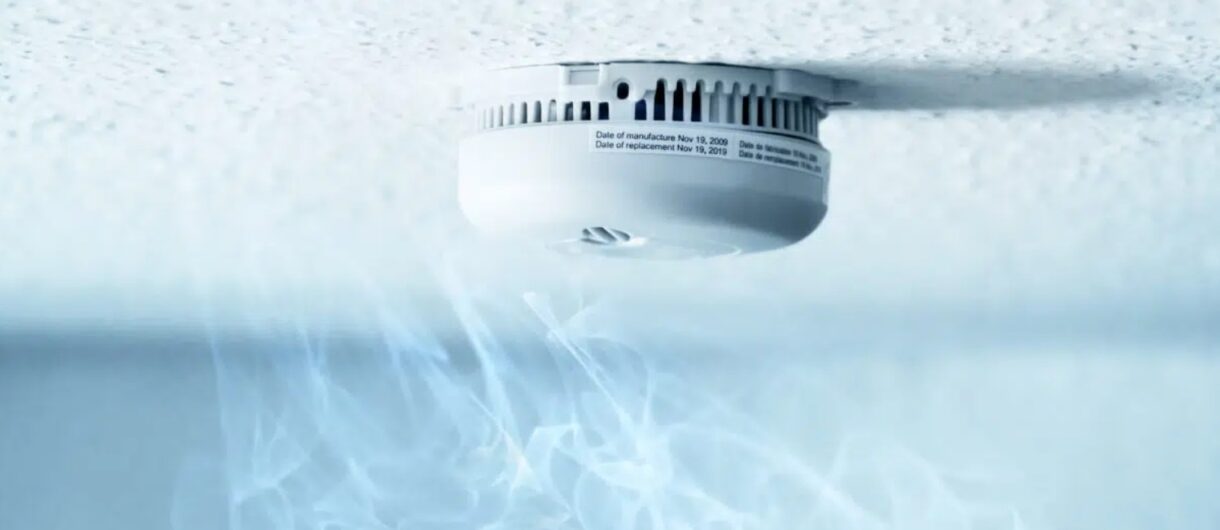
How fire detectors work and their role in fire curtain systems
A fire detector is an essential safety system in any building, both industrial and residential. Fire detection is the first step in initiating an extinguishing operation.
What will you learn in this article?
- What systems are there to detect a fire
- Types of fire alarms and detectors
- Regulations for fire detectors
- Fire detectors for fire and smoke curtains
What systems are there to detect a fire?
There are basically three types of fire sensors:
- Smoke detectors.
- Heat detectors.
- Flame detectors.
Each of these detectors is integrated with a fire alarm that alerts about the fire.
Types of fire alarms and detectors
There are different types of fire detectors. Let’s analyze them.
Smoke detectors can be divided into:
- Ionic detectors. They operate on the principle of ionization and are very sensitive, even to invisible smoke. However, they do not work if the air speed exceeds 0.5 meters per second.
- Optical detectors. The smoke entering interrupts the transmission of a light beam, activating an alarm.
- Optical smoke barrier detectors, or linear ones. This consists of an infrared emission and reception system. If the intensity of the infrared light beam decreases due to smoke, the alarm is triggered.
- Aspirating detectors. A network of pipes sucks in the air and analyzes the sample to see if it contains smoke particles.
Heat detectors can be of two types depending on the sensor type:
- Thermal detectors. They activate when the temperature exceeds 68 ºC and an element inside them melts, making them late detectors.
- Thermovelocimetric detectors. They operate when the temperature rises quickly, about 8 ºC per minute, regardless of the starting temperature.
Flame detectors incorporate a sensor, and depending on the type, they can be divided into three types:
- Infrared detectors (IR).
- Ultraviolet detectors (UV).
- Mixed detectors (IR/UV). In this case, both sensors are incorporated to reduce false alarms while improving sensitivity.
How to choose the best fire detector
The best fire detector is the one that detects the fire from the very beginning and alerts quickly. In environments where smoke can only be synonymous with fire, the smoke detector is the best option because it activates even before combustion begins.
However, it is not always the most recommended option. It is possible that the fire occurs without smoke, as in the case of chemical industries. The same can be said of places where smoke might be synonymous with daily activities, such as a kitchen or a garage.
In these cases, the heat or flame detector is the best option. Especially the thermovelocimetric detector or the one that combines IR and UV.
Regulations for fire detectors
When talking about how a non-industrial building is regulated, the fire detector is governed by the Basic Fire Safety Document of the Technical Building Code.
However, for industrial buildings, the Regulation for Fire Safety in Industrial Establishments must be considered.
In addition to these, the UNE EN 54 and UNE 23007-14 regulations must also be taken into account.
Fire detectors for fire and smoke curtains
The fire detection system and the fire alarm do not work separately from the extinguishing or compartmentalization systems. Together, both can prevent a fire that has just started from spreading. This is why having a complete fire safety system is crucial.
In the case of fire curtains or smoke control curtains, they are activated once the automatic fire detectors trigger the alarm, preventing the fire from spreading to other areas.
If your residential or industrial building already has a fire detector, contact us to learn about the different ways to compartmentalize and prevent the spread of flames and smoke.